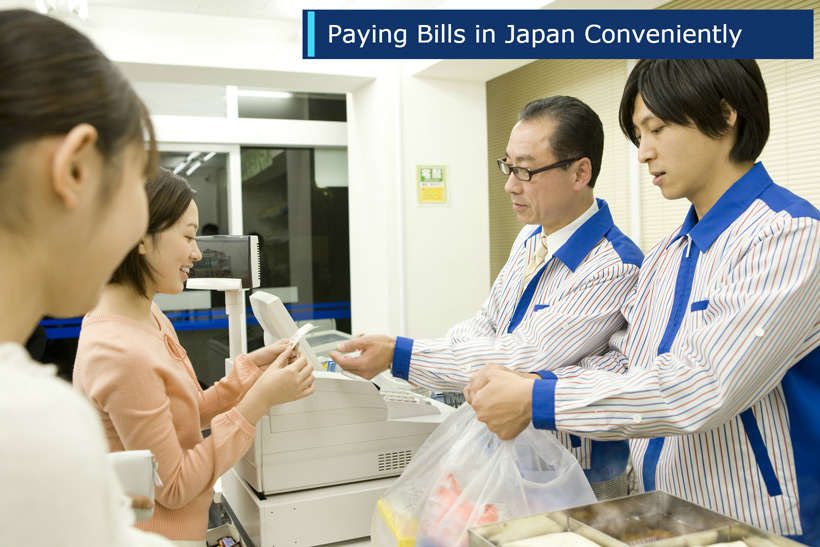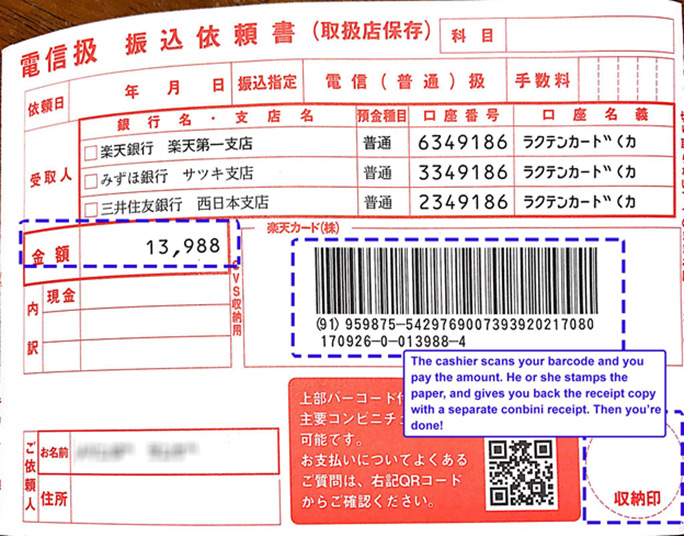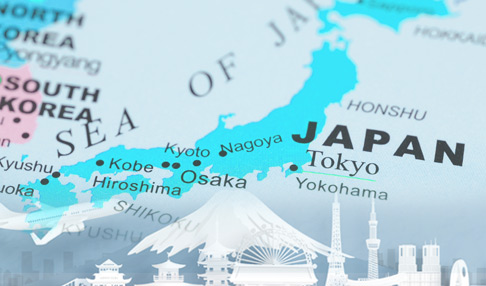Paying Bills in Japan Conveniently: A Simple Guide

Paying bills is no one's favorite thing to do, regardless of where you live. When it comes to paying though, the easier it is the less painful it will be. This is another area in which Japan stands out among the rest.
There are a variety of convenient ways you can pay your bills in Japan, whether it's your utility bills, your phone bill, or even health bills. Keep in mind though that while Japan is very technologically advanced, it is still a very cash-based society, so don't leave home without cash or at least an ATM card. In this article, we will go through the pros and cons of paying bills in Japan at various locations.
At the Convenience Store (Conbini)
Visiting a conbini, or convenience store, is perhaps the most hassle-free way of paying bills in Japan. All you do is take your bill to the nearest 7-11, Lawson, Sunkus, FamilyMart, or other conbini of your choice and hand your bill to the clerk.
The pros are :
- Open 24 hours
- They are everywhere. Choose from 7-11, Lawson, FamilyMart, MiniStop etc.
- Its a simple, no-fuss payment procedure. The clerk will scan the barcode on the bill, which you pay with cash or a cash card. For electricity bills and such you will get a stub with a stamp that is your proof of payment—save this for tax time!
The downsides are :
- Credit cards not accepted
- Depending on the transaction a small fee may be charged
Through Bank Transfer
If you prefer to pay your bills from the comfort and privacy of your home instead of venturing out to the nearest combini, you can of course do a bank transfer. This type of payment is called 口座振込(kouza furikomi) in Japanese. If you'd like to set up a bank transfer via the internet, you should keep the following in mind.
The pros of bank transfer are :
- No need to wait in a physical line
- Online transaction records can be checked
- Automatic monthly deductions can be arranged
But there are some hurdles to the process :
- The ability to read Japanese is required, except in the case of Shinsei Bank which has an English site
- Entering the billing information can be a hassle
- Most banks will charge a transaction fee. In the event that you enter the information wrong, the transaction fee will still be charged even though the transaction doesn't go through
Taking the bill directly to your nearest bank branch or ATM is another way to do a bank transfer. Again the ability to read Japanese is required and a processing fee is charged.
Automatic Withdrawal
The question of how to pay bills in Japan isn't always simply a matter of pure convenience, but also of time. If you don't want to have to go somewhere to pay your bill each month, you can arrange to have utility bills automatically paid out of your bank account or from your credit card. In order to set this up, you will need to get an application form from the utility company for the method you want to arrange. You provide the appropriate account or credit card information on the application form and then return it to the utility company.
The pros :
- Hassle-free monthly payments
- Punctual payment guaranteed
- Utility company will send you notice of receipt each month
The cons :
- Physical application required
- Application takes around a month to process
- Another payment method will have to be arranged while waiting for the application to be approved.
At the Company Office or Store
As last resort, especially in the event that you happen to miss a month, one way of paying bills in Japan is to go directly to the customer service center or store of the company that issued you a bill and pay it there.
The pros :
- Only option if your account is in arrears and bill cannot be read at convenience stores or ATMs
- Possible for mobile phone bills as there are many physical stores
The cons :
- Time consuming as you have to go to the company's customer center during office hours
- Usually only cash accepted
How to Read a Japanese Bill

You could learn each and every kanji character on the Japanese bills you receive, but why not keep it simple? Most of the time, paying bills in Japan is simply a matter of handing the appropriate one to the clerk without saying a word, much less reading one! They will simply scan the barcodes, stamp the bill right inside the circle, and give you a copy of the receipt along with a separate conbini one.
If you're concerned about making the wrong payment, have no fear: The amount due is always listed on the bill in an easy-to-see location. While there are several ways to denote monetary amounts depending on the situation, the easiest thing is just to look for this symbol: 金 (kane, kin) which means "gold" or "money." The amount shown may not always be indicated as yen (¥), but rest assured you're probably not paying thousands of dollars in utilities per month—for example, the amount above comes to about $140 US dollars.
Handling Overdue Payments
Especially if you have an overdue payment, there are cases where you have to mail in a given bill yourself. In the case of an overdue payment, the company will usually send a new notice the size of a postcard with a new barcode that you pay with. In lieu of mailing it in, you may have to go to the bank and take care of it. The conbini doesn't usually handle past-due bills unless they're for credit cards like Rakuten or other companies.
It's not How to Pay Bills in Japan, But Where
There's no magic answer to the question of how to pay bills in Japan—with so many places to do it so conveniently, you should feel free to mix and match. You may find utility bills are best paid at the combini, while you can arrange for your cellphone bills to be charged to your credit card. Online bank transfers may be the best way to pay your credit card bills if it is a substantial sum and you don't want to handle large sums of cash. Use whichever method you find most convenient and that will allow you to pay your bills on time!







